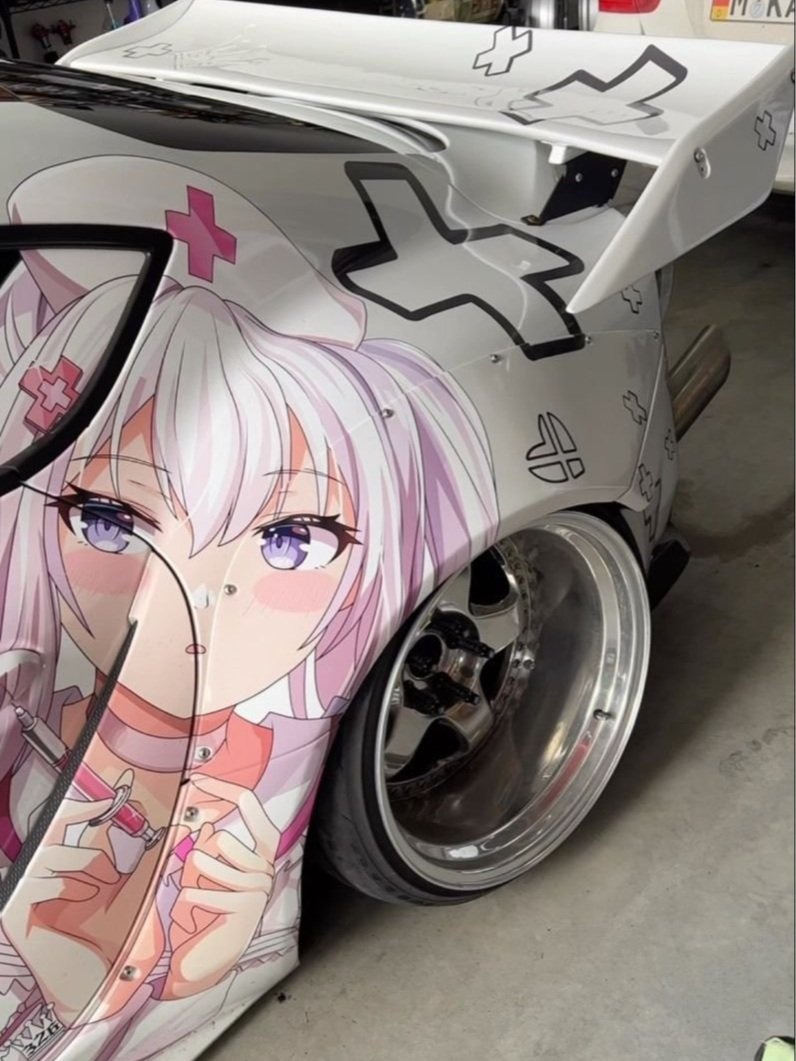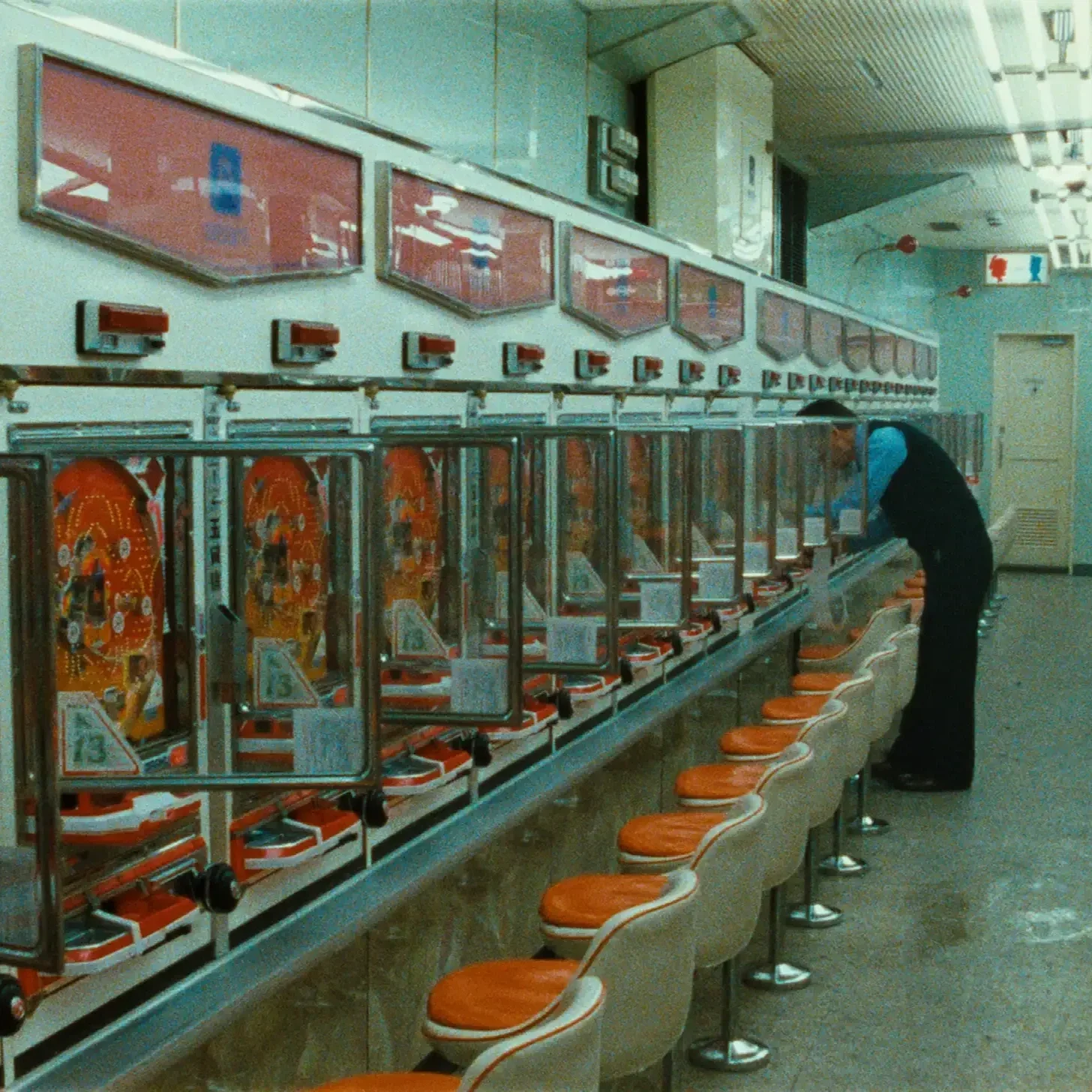Itasha - Japan’s Otaku Car Culture
Start Your Engines
Japan is notorious for its crazy inventions, outlandish practices and overall, seemingly limitless creative drive. From square melons to the Kanamara Festival (aka the Penis Festival) to having your own hologram waifu, Japan’s really got it all… and itasha are no exception.
Literally translating to ‘cringe worthy’ or ‘painful’ cars, itasha are cars dedicated to being decorated in relation to one specific character from a game or anime title. Itasha-experts spend fortunes on making their ride the most over-the-top and dedicated ones in the competition.
Rei Ayanami interior│© Steve Nagata
A Total Total Makeover
Itasha are covered with custom car wraps featuring specific waifu(s), have customized seat covers, special dash boards full of plushies, figures and other merchandise goods, neon lights, stickers and so much more. Not even the engine itself is safe from getting a total makeover! The possibilities for itasha connoisseurs’ cars truly meet no end.
Hatsune Miku Itasha│© Karl Baron
The Dawn Of Itasha
Nowadays, it’s safe to say that itasha has become a lot more acceptable in society with the wide spreading of anime and manga around the globe. However, this was not always the case.
Back in the 1980s, Japan became an economic power fond of importing luxurious Italian cars. The word ‘itariasha’ was a mix of the words Italy and the kanji for car (or vehicle), read as sha in the Chinese reading way.
From there, the decorated otaku cars that started appearing with the ever growing popularity of anime, were dubbed itasha. It was a play on the term used for the luxurious imported cars from Italy, this time combining the words itai and sha, meaning painful or cringeworthy + vehicle.
It was dubbed ‘painful’ in a way because of how expensive it is to customize a car like this, as well as in the sense that they were actual eyesores for many people who would cringe at the fact that people actually would go this far to fortify their love for a two dimensional character.
Itasha car│© Minyoung Choi
A Tremendous Effort In The Name Of Love
As previously mentioned, an incredible sum of money and time goes into making one itasha.
Some of the artists decorate their cars themselves, but most of them make it happen at car wrap specialists and the like. Professional car wrappers take their time designing a car wrap digitally, together with their customer, to make each work the best it can be, and spend weeks on wrapping one project up.
And what do the artists think of their passion? It goes without saying that they love it! Despite the name ‘itasha’ itself, the owners believe that this is the ultimate way to pay respect for their two-dimensional loves, as nothing screams more diehard than this. It’s true devotion!
Whenever they step into their rides and go out for a drive, they feel like they couldn’t be closer to their waifus.
Sharing The Experience
Japan holds many itasha-themed conventions - or cat meetups - as well. The most popular one being the Itasha Tengoku (Itasha Heaven) Expo held annually in Odaiba, Tokyo.
Taking place in a parking lot right next to the Fuji Television Headquarters, as of 2007, the event has gained a significant amount of attention, and each showcase has up to 1.000 parking spots available for these unique wagons.
One more fascinating aspect of itasha is that no two cars are the same. Every ride you pass is a new and wonderful experience, as for each one, some person has spent a lot of time, care and love into the making of it.
The Roaring Community
A lot of people come to visit these unique experiences, including many foreigners. That’s because it’s not just Japan in which itasha exist; many people around the world take part in this phenomenon. You can spot them at many conventions, as well as out in the wild if you’re lucky!
That being said, all kinds of people come to organized itasha events; not just the itasha creators themselves. Visitors from abroad, general car enthusiasts, sightseers and cosplayers make sure to get their fill of itasha when the events roll around!
You can find many pictures of cosplayers taking pictures of itasha with their character on them, because they like going to these events to look for their matching ride.
They can also be hired to help show the itasha off, but that’s only a small aspect in comparison to the genuine fun everyone has here.
The Next Stop Is…
It’s not just cars that are customized, either; next to itasha, there are itabasu, itansha, itadensha and more. Itabasu are what they sound like; cringeworthy buses.
Though these are more frequently used as a form of advertisement, they still fall under the definition of an itasha in bus-form. Public buses, tour buses, vans, etc. fit into this category.
The vans can be found at conventions like the Itasha Tengoku Expo, and are entirely dedicated to a show or game in most cases. Both on the inside, and outside. A lot of vans (and itasha) showcase the inside of their customized cars by opening up the trunks and hoods to show off the customized insides.
Regular itabasu can be found driving all around Japan, and there’s a good chance you can catch a ride on one by simply traveling by bus there.
A Daring Passion
Itansha are the motorcycle variant of this culture, and as you can see, confidence is a huge part of what makes itasha and its subcultures viable.
Whilst many strive to show how much they love their waifu by adding as much merch of them as possible onto and into one vehicle, others show their passion by going further in rather exotic ways, so to say.
It just goes to show how wide the customisation of a ride can go, and how people that make work of it make sure to make their ita-vehicle as personal and meaningful to themselves as possible.
© Tenryu Hamanako Railway
Wholesome Advertisement
Finally, itadensha are anime-themed trains which occasionally appear on the Japanese railways.
Much like itabasu, it’s likely to come across one of these beauties in your day-to-day life in Japan. Though, a lot of people do go out of their way to catch these, as they are still a lot more rare than your regular train.
The insides of each cart on an itadensha are fully stylised to relate to their theme in as many ways as possible.
© Eiichiro Oda / Shueisha
It’s The Sunny!
A beautiful example of this is the One Piece itadensha, which was erected onto the Minami-Aso line in Kumamoto, Japan. As of August, 2023, it is scheduled to do 3 round trips around the area per week, for about a year.
After the Kumamoto Earthquake that shocked the region in 2016, fundraisers were started to restore the damage done to the town and its railway.
As a commemoration for the restoration of the track, the Thousand Sunny-themed wagon dubbed the ‘Sunny-Go Train’, was put in commission.
On the inside, you can find panels from the One Piece manga on the ceiling, a lot of props like suitcases filled with gold coins, devil fruit models, and even the lamps are shaped to resemble Luffy’s straw hat.
Itasha is a culture much more vibrant than one might realize at first sight, but a lot of team effort, love, dedication and finances go into making it all happen. There are many people who find joy in what they do surrounding this passion, and many of the results are pleasing to look at for a lot of people.
itasha car│© coolanimeboy25
The Final Gear
Though still seen as extravagant to many outsiders, for those within the community, it’s something they’re ever-so-happy to be a part of. It’s all a matter of self expression when it comes to itasha.
Even those that exist purely for advertising are eye candy for people of any age, as Japan just offers such a colorful culture filled with bursting creativity and dedication to doing something people truly love doing, against the many muted aspects of life.
















Rediscovering traditional indigo dyeing through a new generation.